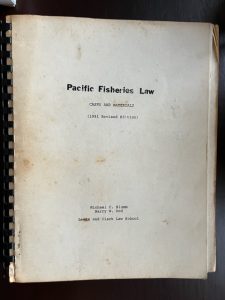Posted on February 18, 2022 by Dennis H. Treacy
“A few Bevers, Otters, Beares, Martins and minkes we found, and in divers places that aboundance of fish, lying so thicke with their heads above the water, as for want of nets (our barge driving amongst them) we attempted to catch them with a frying pan: but we found it a bad instrument to catch fish with: neither better fish, more plenty, nor more variety for smal fish, had any of us ever seene in any place so swimming in the water, but they are not to be caught with frying pans.”
—Captain John Smith, 1608
Many of us have followed the progress of the Chesapeake Bay cleanup; sadly slow but encouragingly steady. Chesapeake Bay states have been working for decades to improve state pollutant loads, and US EPA has imposed a TMDL on the entire bay to, in the words of a former EPA official, place the bay on a pollution diet. These collective efforts have resulted in improved “grades” by NGOs and the media in all sorts of categories. Hooray for the Bay! Let’s keep going!
But I was alarmed to see one category of Bay health continue to decline. Virginia’s James River Association recently reported the demise of American Shad, named by John McPhee as America’s Founding Fish, in the James River, which Congress designated as America’s Founding River. H.Res.16(110th): RECOGNIZING VIRGINIA’S JAMES RIVER A “AMERICA’S FOUNDING RIVER”. I recall fishermen from all walks of life lining the banks of the James each spring catching scores of anadromous shad for their tasty roe and then later for whole salted fish, both delicacies in this part of the world. American shad also have been called “poor man’s tarpon” because they put up a great fight when hooked and historically ran through major east coast cities built along their spawning rivers. Another right of spring was the annual “Shad Planking” an event where past, current and future politicians gathered for the grandest political celebration in Virginia, https://en.wikipedia.org/wiki/Shad_Planking. Shad were attached to wooden boards and smoked over outdoor fires and consumed with delight by the gathered assembly. American shad were once the most valuable fishery in the Chesapeake Bay, considered one of the most productive estuaries in the world.
But the American Shad are only a small sliver of their former population. JRA scored the shad decline as its first ever zero for any River resource on their river report card. The demise of this historic, popular and once bountiful fish is tragic. JRA attributes the complete collapse of this fishery to numerous factors including habitat loss, dams, water withdrawals, predation by invasive catfish and offshore fishing bycatch, https://thejamesriver.org/about-the-james-river/saving-american-shad/. Should we write off the American shad as a lost population or should we attempt heroic efforts to restore? Closing the state fishery, fish ladders and hatchery stocking projects have been attempted with great optimism. They failed. What now?
While reading about the plight of the shad I recalled a class I took forty years ago at Lewis & Clark Law School from Professor Mike Blumm called Pacific Fisheries Law. The class described and discussed the unthinkable potential loss of the plentiful salmon population in the Columbia River. Competing interests of hydro power generation, overfishing by commercial fishermen, recreational fishermen and Native Americans and declining water quality contributed to the early decline (which later became a catastrophic decline). The class exposed the students to a full discussion of the good, the bad and the ugly of the situation along with a considerable amount of analysis of what to regulate. It concluded with a recitation of relevant federal and state statutes and court cases in an attempt to encourage adoption of actual and comprehensive plans for the fishery. Numerous plans were developed and implemented by states and the federal government; some targeting individual species and some outlining broader restoration efforts. Although some species of salmon have not returned to the Columbia in great numbers the decimation of the fishery seems to have been curtailed, at least for now.
I found the old 1981 Pacific Fisheries Law text book in my bookcase. Just seeing it reminded me that concerted scientific, policy and legal effort can sometimes result in good things. American shad need a similar comprehensive plan to bring them back from the brink of collapse, but they fall in a limbo land of fisheries management. Their numbers are not low enough to list them as an endangered species and therefore trigger an ESA recovery plan, and their numbers are too low to support a commercial fishery and therefore no management plan is established by the Atlantic States Marine Fisheries Commission. Given the urgency of the situation and the lack of any established plan, the Virginia General Assembly is considering funding for a state-driven emergency recovery plan. It contains at least a formula for the beginning a shad restoration effort. If Captain John Smith were here I bet he would encourage adoption of the bill. As for law schools, Lewis & Clark tackled the salmon decline with great vigor in the early 80’s and it helped. I hope the law schools in Virginia and perhaps other Bay states will attack the shad decline with as much enthusiasm as Professor Blumm and his colleagues at L&C.

